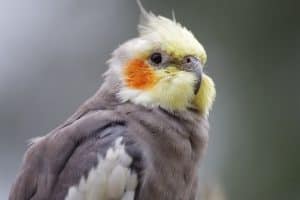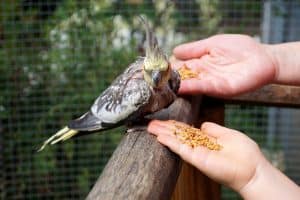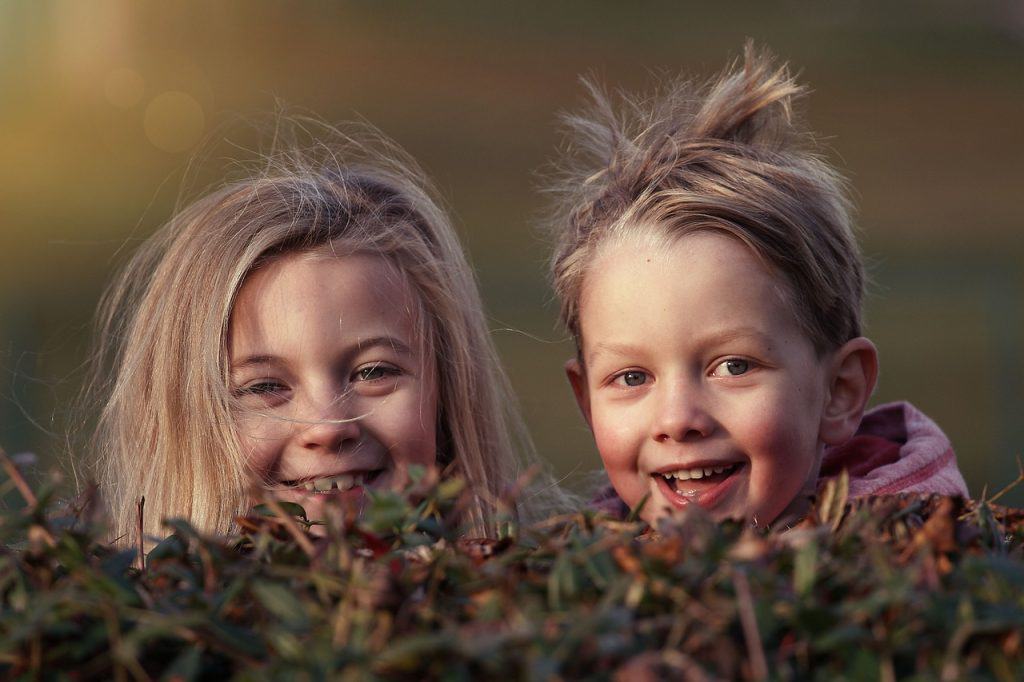When it comes to family pets, few can match the charm and personality of a cockatiel. These small, friendly birds are known for their playful nature and ability to form strong bonds with their human companions. But how does cockatiel interaction with children play out? As a parent, it’s crucial to understand how these feathered friends can fit into your family dynamic.
I’ve seen firsthand how cockatiels can brighten a child’s day with their cheerful chirps and affectionate behavior. They not only entertain but also teach kids about responsibility and empathy. So, if you’re considering adding a cockatiel to your household, you’ll want to know what to expect when it comes to their interaction with your little ones.
Benefits of Having a Cockatiel for Children
Cockatiels offer several benefits for children. Firstly, caring for a cockatiel teaches responsibility. Kids learn to provide food, water, and a clean cage, instilling a sense of duty. Cockatiels are excellent companions for young children as they’re gentle and friendly, making interactions safe and enjoyable. They’re smaller birds compared to larger parrots, making them easier to handle for small hands.

Another advantage is the emotional connection. Cockatiels can form strong bonds with their child caregivers, providing comfort and a sense of security. This bond can be particularly beneficial for children who may find solace in their pet bird during tough times. The companionship of a cockatiel can improve mental health by reducing feelings of loneliness and boosting mood.
Cockatiels also encourage children’s curiosity about animals and nature. Observing a pet bird’s behavior, such as their body language and communication methods, can spark an interest in biology and animal care. Kids become more engaged and motivated to learn about different bird species and their habits. This educational aspect can foster a lifelong interest in wildlife and conservation.
Furthermore, having a cockatiel can help develop a child’s empathy and compassion. Interacting with a sensitive being like a cockatiel teaches kids to understand and respect the needs and feelings of others. This can translate to better social skills and kinder behavior towards both pets and humans.
Cockatiels are a good choice for families as they integrate well into the household dynamic. They’re generally quieter than larger birds and can coexist with other pet birds like budgies. Their playful nature provides entertainment for children, and they enjoy interactive toys, adding an extra layer of fun. The whole family can participate in the bird’s care, making it a shared, enriching experience.
Lastly, the presence of a cockatiel can teach children about the importance of a good diet and health. Feeding the new bird and young bird a balanced diet and ensuring it gets proper care emphasizes good habits. Kids can apply these lessons to their own lives, understanding the importance of nutrition and care for both themselves and their pets.
Overall, the inclusion of cockatiels in a child’s life offers multifaceted benefits, promoting physical, emotional, and social development.
Health Considerations
When considering cockatiel interaction with children, it’s essential to be aware of potential health concerns. These small birds can carry diseases that might affect your family’s well-being. Here’s what you need to know.
Psittacosis (Parrot Fever)
Psittacosis, also known as Parrot Fever, is a bacterial infection that pet birds, including cockatiels, can transmit to humans. Children with weaker immune systems are particularly vulnerable. Symptoms in humans include flu-like signs such as fever, chills, and headache. Proper hygiene and regular veterinary check-ups for your cockatiel minimize the risk.
Allergic Alveolitis (Bird Fancier’s Lung)
Allergic Alveolitis, or Bird Fancier’s Lung, is a hypersensitivity reaction caused by inhaling particles from dried bird droppings and feathers. Spending time with smaller birds like cockatiels might lead to respiratory issues in susceptible children. Keeping the cage clean and ensuring good ventilation in areas where the bird is present can help reduce this risk.
Salmonella
Salmonella is another concern when interacting with pet birds. Cockatiels can carry this bacterium, and children handling these pets without proper hygiene might contract it. Symptoms include diarrhea, fever, and stomach cramps. Teaching kids to wash their hands after handling their cockatiel and maintaining the bird’s healthy diet support a safer environment.
Understanding these health considerations helps ensure a safe bond between your cockatiel and children. Monitoring your child’s health, practicing cleanliness, and seeking veterinary care as needed are key to maintaining a safe interaction with these friendly birds.
Safety Tips Cockatiel Interaction with Children
When incorporating a cockatiel into a household with children, safety must be a priority. Young birds can bring joy and teach responsibility, but ensuring safe interactions is crucial.

Preventing Illness
Maintaining proper hygiene minimizes health risks. Encourage children to wash their hands before and after handling the cockatiel. Regular cage cleaning reduces the chance of illnesses like Psittacosis and Allergic Alveolitis. Schedule periodic veterinary check-ups to keep the bird’s health in check. Make sure children understand the importance of not sharing food or drinks with the bird to prevent Salmonella infection.
Handling Bird Bites
Cockatiels, like other pet birds, may bite if frightened or mishandled. Teach children to read the bird’s body language to understand when it feels threatened. Guide them to approach the bird calmly and avoid sudden movements. If a bite occurs, instruct children to gently put the bird back in its cage and inform an adult. Use positive reinforcement to train the bird and children to interact safely. Reinforcing safe handling ensures a harmonious relationship between children and their cockatiel.
Teaching Children to Interact with Cockatiels
Teaching kids to interact with cockatiels fosters a lifelong appreciation for pets. Successful interaction begins with understanding the bird’s needs, respecting its space, and practicing gentle handling techniques.
Respecting the Bird’s Space
Children must learn to respect a cockatiel’s space for successful interaction. Cockatiels, like all pet birds, have territories they consider safe zones, such as their cage and perches. Kids should approach the bird slowly and avoid sudden movements to prevent startling it.
I recommend setting boundaries around the cockatiel’s cage, explaining it’s the bird’s personal space. Encourage children to speak softly near the cage and to avoid putting their hands inside without supervision. This teaches respect and allows the cockatiel to feel secure.
Using visual cues helps in understanding cockatiel body language. For instance, a bird that’s fluffed up or has pinned eyes might feel threatened or agitated. Teach children to recognize these signals and to step back if the bird seems uncomfortable.
Gentle Handling Techniques
Handling a cockatiel requires gentleness to ensure the bird remains tame and comfortable. Explain to children that cockatiels are small birds and that rough handling can hurt them. Show how to offer a hand slowly, allowing the cockatiel to step up when ready.
Using treats helps to build trust. Kids can offer small rewards like millet to encourage the cockatiel to approach. Demonstrate how to lightly stroke the bird’s head and back, avoiding sensitive areas like the wings and tail.
Supervised interaction is key, especially for very small children. Younger kids may unintentionally squeeze or drop the bird. I suggest older children or parents handle the bird initially, gradually allowing younger kids to participate under watchful eyes.
Daily interaction time benefits both the child and the cockatiel, helping to strengthen their bond. Engaging in play with toys, such as bells and mirrors, keeps the bird entertained while promoting a gentle touch.
Teaching these interaction principles fosters a safe and enjoyable relationship between children and their cockatiel, contributing to positive experiences for the whole family.
Monitoring Interactions
Monitoring interactions between children and cockatiels ensures safe and positive experiences. Cockatiels, though gentle, can become stressed or agitated if not handled carefully. Supervised playtime is crucial, especially with very small children. Always stay nearby to intervene if necessary.
Teach children to read the bird’s body language. If a cockatiel fluffs its feathers or hisses, it’s important to give it space. Kids may need reminders initially but will learn over time. Ensuring children respect the bird’s comfort zone reduces the risk of bites.
Parental involvement is key in fostering a healthy relationship. Parents should guide initial interactions, showing kids how to handle the small bird gently. Explain the importance of soft, calm gestures to avoid startling the cockatiel. Older children can gradually take more responsibility, but younger children should always have parental supervision.
Regularly check the bird’s environment. A clean cage, fresh food, and water are essential for health. Encourage kids to help with these tasks under supervision to reinforce hygiene practices. Educate them about the importance of a good diet for their pet bird to keep it healthy and vibrant.
Consider setting specific interaction times. Structured routines help the cockatiel feel secure and teach children consistency. Use these moments to teach kids about caring for their pet’s emotional needs, such as spending quiet time with the bird or talking softly to it.
Discourage sudden or loud movements. Cockatiels, like other smaller birds, can be scared by quick actions. Teach children to approach the bird slowly and speak softly. This habit helps in forming a bond of trust between the child and the cockatiel.
In households with other pets like dogs or cats, always ensure interactions are safe. Never leave a cockatiel alone with other pets. Introduce them gradually, always monitoring their interactions to prevent accidents or stress.
For families new to bird ownership, I recommend research on cockatiel behavior. Understanding their needs and signals can significantly improve the interaction quality. Books, online resources, and visiting avian veterinarians offer valuable insights.
Supervising children’s interactions with their cockatiel helps in forming a strong, positive bond. Using these strategies promotes a harmonious and joyful experience for both kids and their feathered friend.
Cockatiels can be wonderful companions for children, offering both joy and valuable life lessons. They teach responsibility, empathy, and curiosity while fitting seamlessly into family life. However, it’s crucial to prioritize safety and hygiene to ensure a healthy relationship between your child and their feathered friend. By monitoring interactions and following safety guidelines, you can create a positive and enriching experience for your child and your cockatiel. So, if you’re considering adding a cockatiel to your family, remember the benefits and responsibilities that come with it.
Ensuring positive interaction between your cockatiel and children is key to fostering a happy and healthy environment for your pet. To learn more about cockatiel care, explore these helpful resources: how to teach your cockatiel to talk, tips on transporting your cockatiel to the vet, and introducing a new cockatiel to the family. You’ll also find practical advice on training your cockatiel to poop in one place and getting your cockatiel to step on your hand, all of which can help create a safe and enriching environment for your cockatiel, especially around children.
Frequently Asked Questions
Are cockatiels good for children?
Yes, cockatiels are excellent for children. They are friendly, social birds that can help teach kids responsibility and empathy. Caring for a cockatiel involves feeding, cleaning, and interacting with the bird, which fosters a strong bond and reduces feelings of loneliness.
What benefits do cockatiels offer for children’s development?
Cockatiels teach kids responsibility through daily care tasks. Interacting with these birds enhances empathy and compassion, improves social skills, and sparks curiosity about animals and nature. The joyful and playful nature of cockatiels can also provide entertainment and comfort.
Are there any health risks associated with cockatiels?
Yes, there are some health risks. Cockatiels can transmit Psittacosis (Parrot Fever), Allergic Alveolitis (Bird Fancier’s Lung), and Salmonella. Ensuring proper hygiene, regular vet check-ups, and a clean environment can minimize these risks.
How can I ensure my child interacts safely with a cockatiel?
Encourage children to wash their hands before and after handling the bird. Supervise their interactions, teach them to recognize the bird’s body language, and avoid sudden movements. Regular cage cleaning is essential to maintain a healthy environment.
What should I do if my child gets bitten by a cockatiel?
If a cockatiel bites your child, clean the wound with soap and water, and apply an antiseptic. Teach your child to approach the bird calmly and recognize its body language to prevent future bites. Monitoring interactions and guiding children on proper handling can reduce such incidents.
Can cockatiels integrate well into a household with other pets?
Yes, with careful monitoring. Introduce other pets to the cockatiel gradually and always supervise their interactions to prevent accidents. Understanding each pet’s behavior can help foster a harmonious household.
How often should I clean the cockatiel’s cage?
You should clean your cockatiel’s cage weekly, with daily removal of waste and leftover food. Regular cleaning helps maintain a healthy environment and minimizes health risks, contributing to the well-being of both the bird and the family.
Should children handle cockatiels alone?
It’s best for children to handle cockatiels under adult supervision, especially during initial interactions. This ensures the safety of both the child and the bird, helping to build a positive relationship and avoid any stress or harm.
Key Takeaways: Cockatiel Interaction with Children
- Big benefits: gentle, playful cockatiels teach kids responsibility, empathy, and basic biology; small size fits young hands.
- Health guardrails: watch for Psittacosis (Parrot Fever), Bird Fancier’s Lung, Salmonella—vet check-ups and cage hygiene (weekly deep clean, daily waste removal) are non-negotiable.
- Safe-handling rules:
– Always supervise kids under 12; older children may handle under guidance.
– Wash hands before AND after every interaction; no sharing food or drinks.
– Teach calm, slow approaches; no sudden movements or loud noises.
– Let the bird step up voluntarily—never force or squeeze. - Bite protocol: if bitten, place bird back gently, clean wound, and review body-language cues (fluffed feathers, pinned eyes = back off).
- Cage & environment: place cage in a quiet, draft-free zone; provide separate perches/toys to reduce territorial bites.
- Daily child duties: refill water, offer small veggie slice, and spend 10–15 min supervised “talk time” to strengthen the bond.



